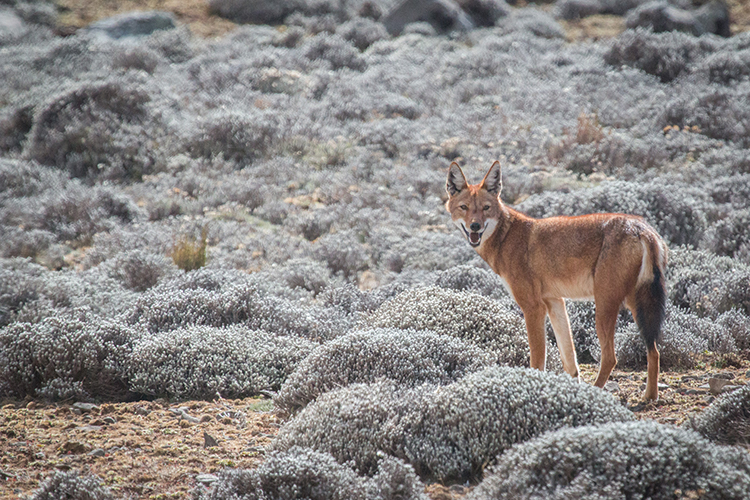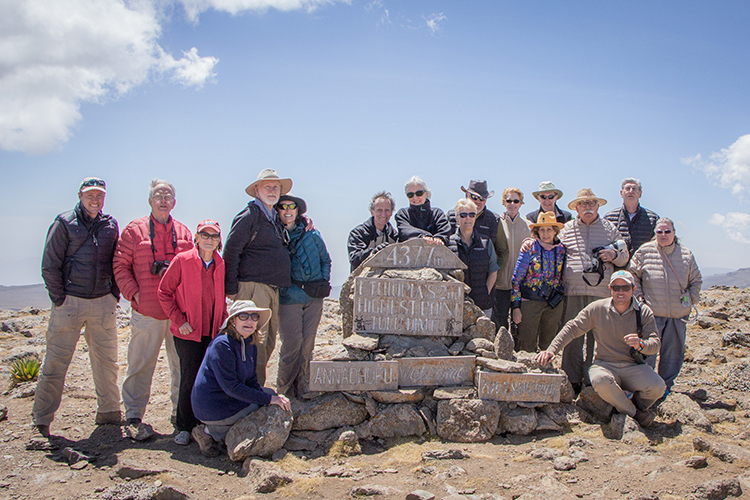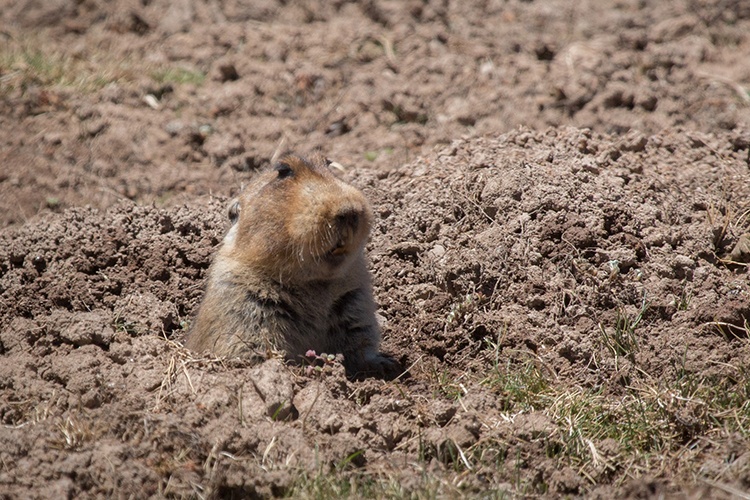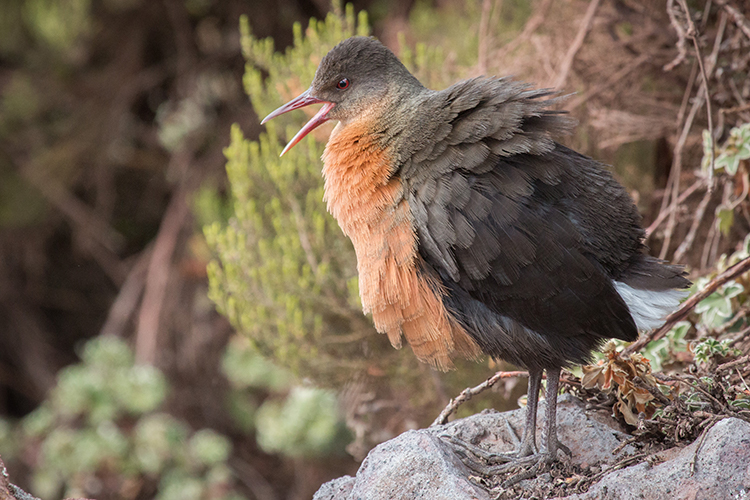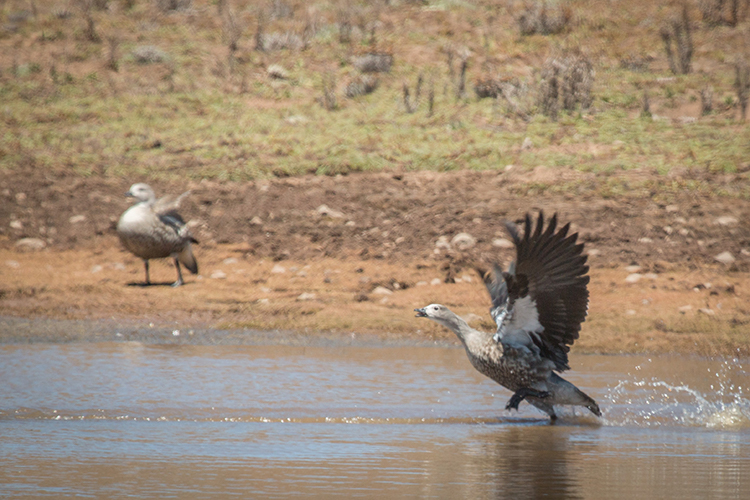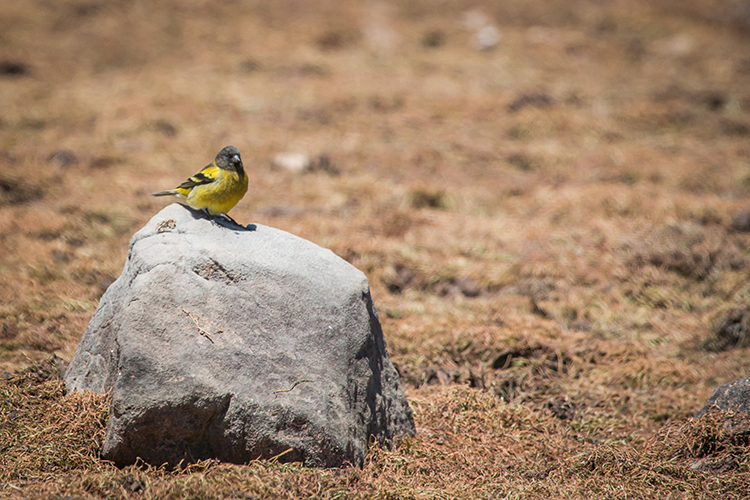Spotting the Rare Ethiopian Wolf
Posted by Marco Tonoli
in Africa
The Sanetti Plateau – Home to the Rare Ethiopian Wolf
Today we ascended Africa’s highest road to the legendary Sanetti Plateau in search of the world’s rarest canid, the Ethiopian Wolf.
Often referred to as “the roof of Africa”, Ethiopia has almost 80% of the land in Africa that is above 9,800 feet above sea level. It is lying on 30 million-year-old rock that formed from basaltic outflows covering a surface area as big as Texas, and as deep as 1.7 miles. After millions of years of climatic change and glacial events carving through the land, the highland environment of Ethiopia is staggeringly beautiful and a dramatic scene. This massive dome that covers much of Ethiopia is torn in two by deep faults in the Earth’s crust that have formed the East Africa Rift Valley, creating two very distinct highland habitats. On the southeastern region of the Rift Valley lie the Bale Mountains, and at its highest point, the endless rolling alpine moorlands of the Sanetti Plateau.
For any naturalist, Ethiopia’s highland environment offers an exciting journey of discovery. As these high elevation landscapes have been in geographic isolation for so long, the area is abundant with endemic species, both fauna and flora. It was here, in the Bale Mountains National Park, that we would search for many of these unique creatures.
Encountering Ethiopia’s Endemics
Our journey first took us east from Lake Awassa, climbing from the warm acacia woodland and up out of the Rift Valley. As we gained in altitude, the habitat began to change and we were soon deep in Juniper Woodlands. The gateway to Bale Mountains is the Park Headquarters of Dinshu, a heavily wooded habitat dominated by Juniperus procera and Hagenia abyssinica, and home of the endemic Mountain Nyala, the last of the great African antelopes to become known to science. We were pleasantly surprised to find them in abundance in the surrounding woodlands, as they rested in the shade, ruminating and quite unperturbed by our presence.
Heading further up into the park, we began to yet again see the altitudinal changes in habitat, as we exited the woodlands and entered into a heather dominated environment, and finally up into the moorlands, as the land opened up onto a rolling plateau covered in moorland grasses and helichrysum heathlands. The endemism became apparent here very quickly. Before we knew it, from a single view point at a small pan, we had incredible views of Blue-winged Goose, Spot-breasted Lapwing, Black-headed Siskin, a Rouget’s Rail pair, and a small flock of Ankober Serin.
Observing the Bizarre Giant Root-Rat
Taking the time to enjoy these species, and indulging in a warm cup of coffee, we began to notice that the land was alive with activity. Small rodents scurrying along the ground in search of food and alert of aerial predators. While amazed at the density of Blick’s Grass-Rats covering the landscape, we managed to get our first view of the bizarre and wonderful Giant Root-Rat. This is a species of rodent that has adapted not only to its surrounding habitat, but has a remarkable change in its skull structure where its eyes have migrated to the top of its head to ensure it can get a view from the safety of its burrow before it heads out to forage. These robust looking rodents are incredibly numerous. Studies have shown that in peak numbers in the rain season, healthy alpine moorland habitat can hold as many as 16,250 individuals per square mile.
Seeking the Rarest Canid on Earth
With this much biomass of rodents, it has opened up a niche for a strikingly beautiful predator—a descendant of the European Grey Wolf that has evolved to capitalize on this hefty rodent, as it continuously trots through the land looking for a meal. This is the Ethiopian Wolf. It is the rarest canid on earth, with fewer than 500 in existence. They are restricted to habitat that covers only 2% of Ethiopia’s landmass. The Ethiopian Wolf is endemic to the alpine moorlands of Ethiopia and is a rodent specialist.
Light on the foot, its slender frame allows it to stealthily sneak up on its subterranean prey. It has an elongated head, long jaw, and widely spaced teeth that allow it to punch deep into the earth as it pounces up and punctures the ground to get its teeth on a large root-rat. Having found an area rich in Giant Root-Rats, we knew we were in perfect habitat for the wolf.
Spotting the Ethiopian Wolf
We began the exciting search for one of Ethiopia’s most prized endemics. With such low numbers of wolves, one would expect a grueling long search. But to the amazement of our entire group, we had not travelled more than half a mile from our starting point when we saw the burnt orange color of a canid pop out of the heath and trot casually along the side of the road. It was not more than 100 feet from us, and it gave us a casual look as it slowly searched the land for food.
We had been in Bale Mountains for no more than 2 hours and we had already captured its greatest prize. It is special encounters like spotting the Ethiopian Wolf that make this environment so rewarding. There are few areas that one can have a glimpse of such a high number of endemics in such a short space of time. For any individual looking to discover the rich diversity of our natural world, Ethiopia’s Bale Mountains and Sanetti Plateau will offer a rich experience with many exciting rewards.
Learn more about traveling to Ethiopia with Apex on our Ethiopia expedition page.

